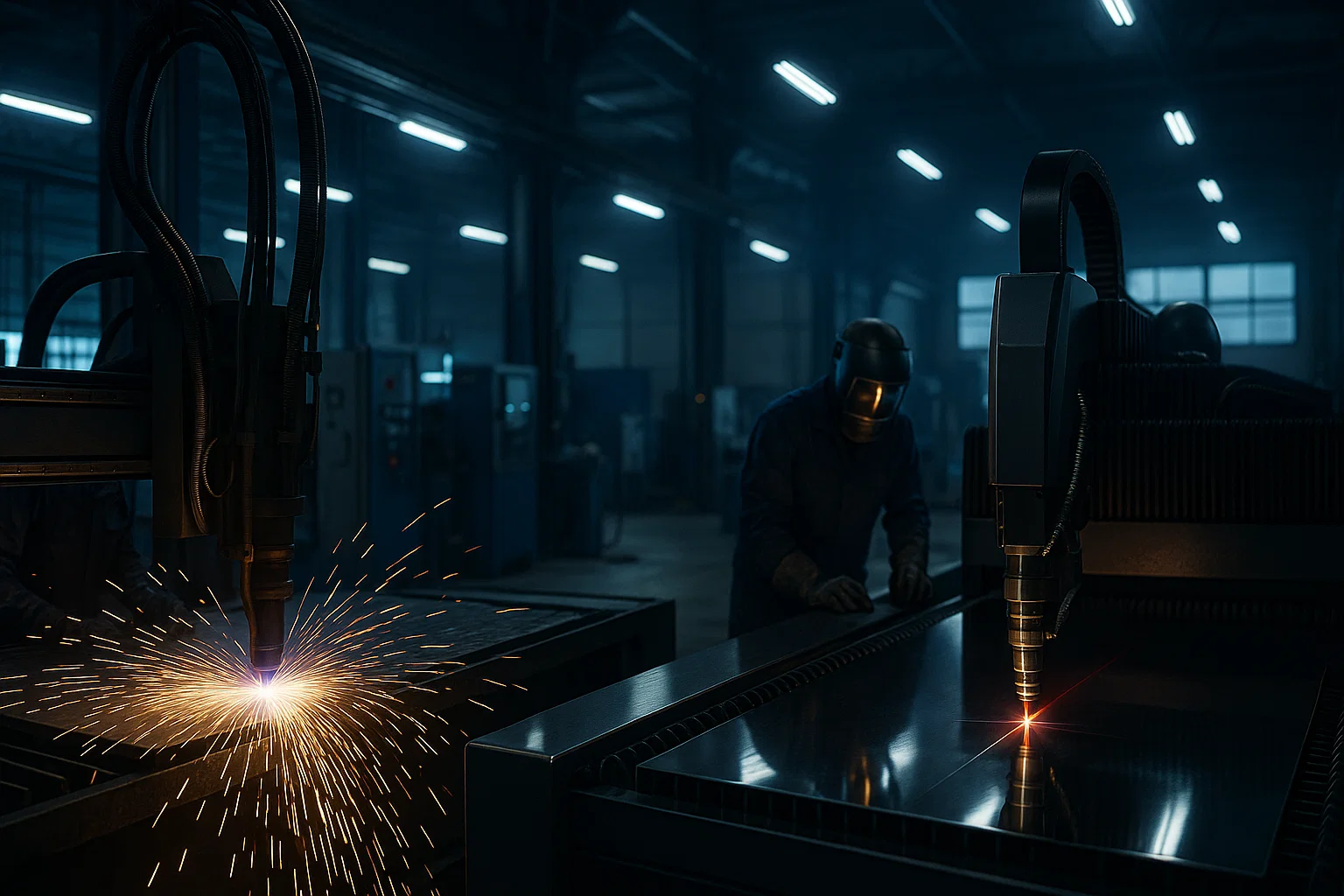Metal cutting (including laser cutting and CNC profiling) is an essential production process used in high-profile manufacturing industries such as automobile components, appliances, aerospace, shipbuilding, defence, electronics, and more. These industries depend on fast, precise cutting methods to keep products rolling off the production line quickly and efficiently, ensuring high output and consistent quality.
Two of the most commonly used technologies used in metal fabrication are Computer Numerical Control (CNC) profiling and CNC laser cutting. Each of these technologies has strengths, weaknesses, and hidden costs and the equipment you choose can have an enormous impact on your production costs, quality output, lead times, and ultimately profitability. Often, the use case will dictate which machine is best suited to your application.
Many businesses choose lasers because the machines are modern, fast, and precise. However, CNC profiling remains an essential process in many industries for good reason.
In this article, we’ll look at CNC profiling vs laser cutting from a practical and cost-aligned perspective. We’ll look at the big picture, from the initial investment to the machine versatility and material range, skills required, maintenance, and actual cost per component.
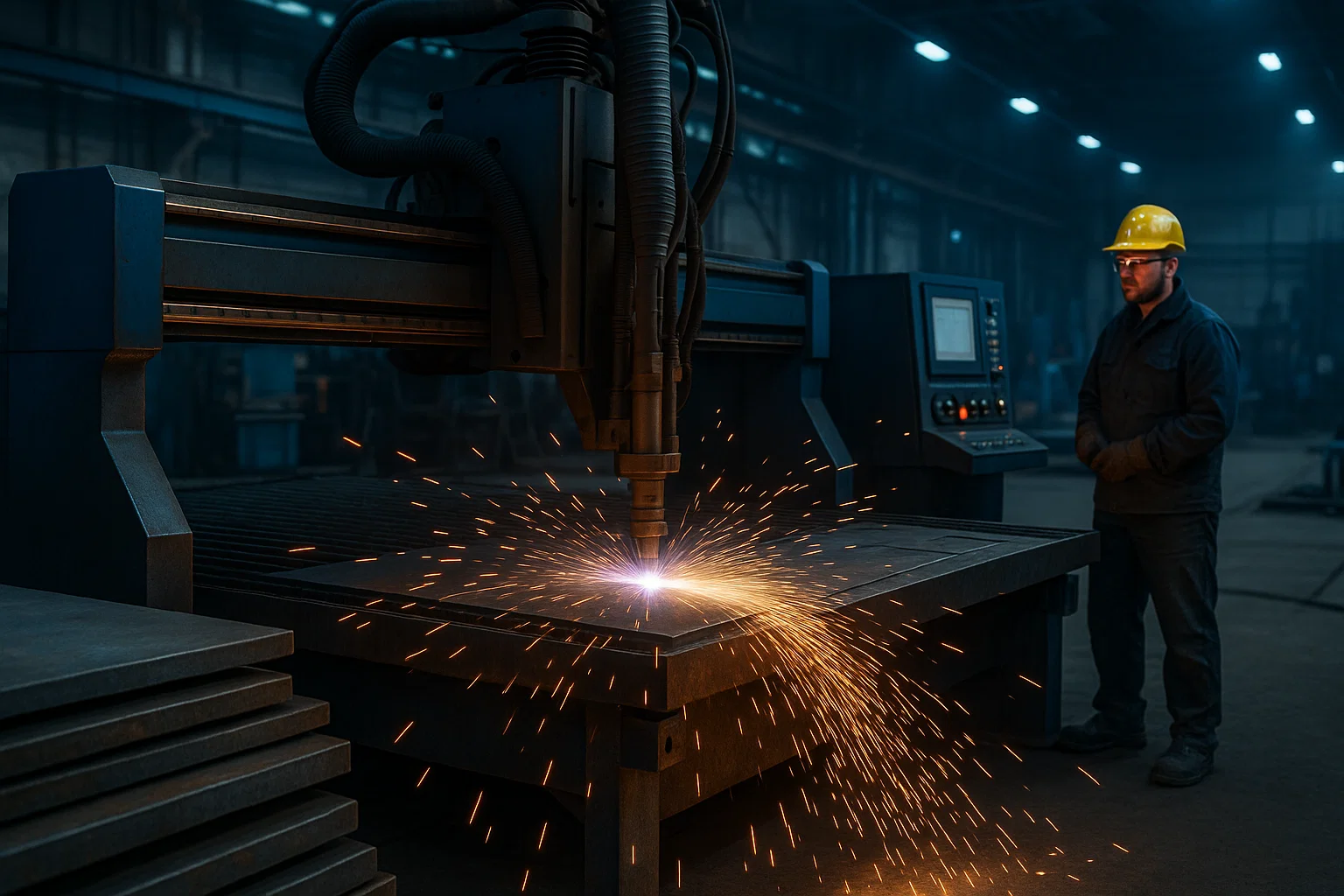
What Exactly Is CNC Profiling?
CNC profiling is the process of cutting, shaping, and removing excess materials to form needed shapes from tough materials like metals. It is an automated process run with automated tools. An onboard computer loaded with Computer-Aided Design (CAD) files controls the process.
The CNC profiling machine follows a precise path, cutting away raw material as directed by the software. The machine can produce thousands of dimensionally accurate components of consistent quality. Computer control removes the risk of human error.
What Is Laser Cutting?
Laser cutting is a thermal process that involves cutting and machining materials, usually metal. It uses a concentrated beam of light computer numerically directed using optics. The laser is narrowed down and intensified as it is focused through a lens. The beam melts the material to form the cuts required to create the component. Laser cutting produces components with accurate dimensions and a high-quality edge.
The machine uses assist gases to blow away debris created by the process. The gas blown onto the worked material also helps to cool the surface, preventing distortion. Laser beams can also weld and etch.
There are two primary laser types available — carbon dioxide and fibre lasers. Fibre lasers can produce a finer, more precise cut, and can cut thicker materials than a carbon dioxide laser.
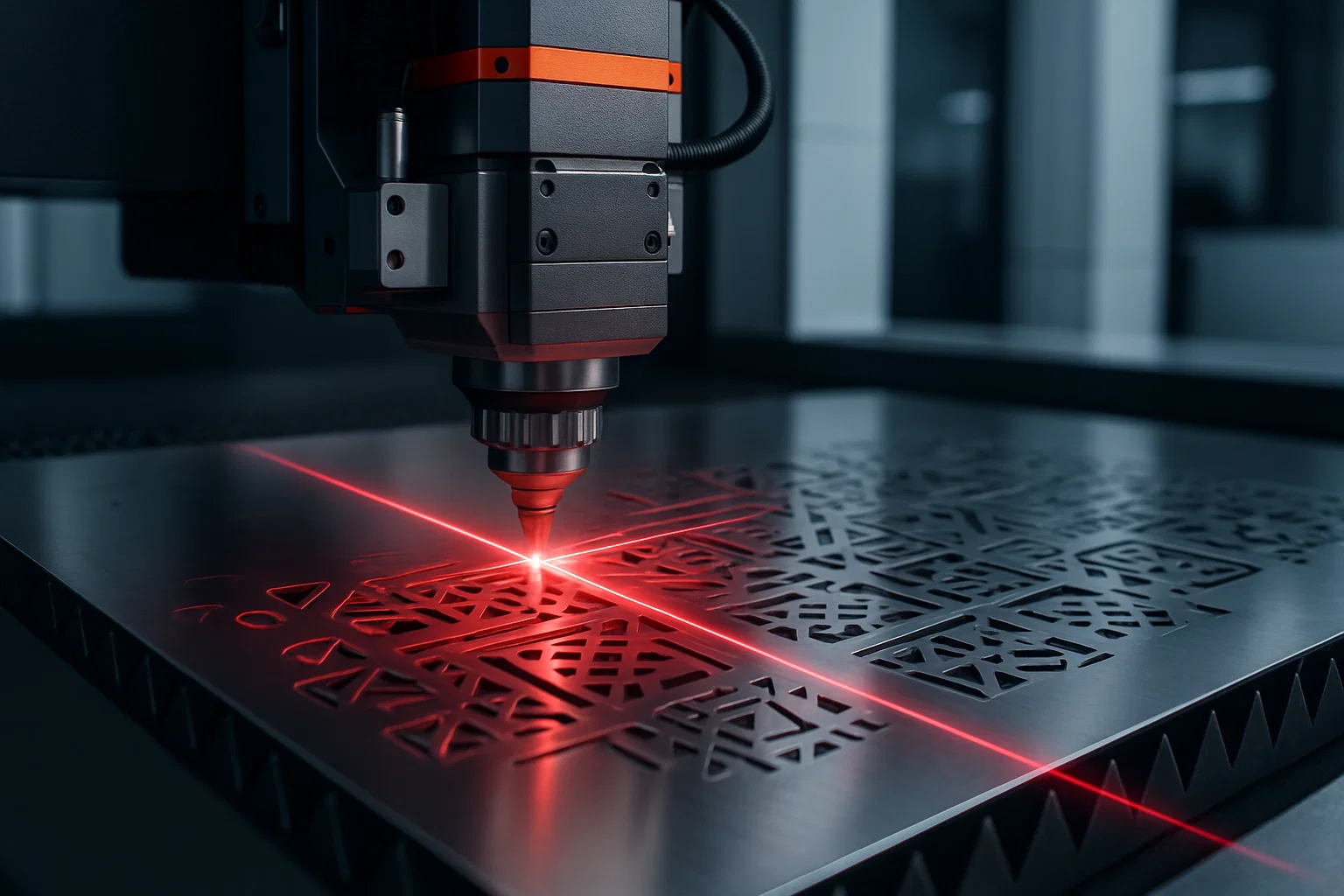
Laser Cutting Applications
Laser cutting is used in the following industrial applications:
- Sheet metal laser cutting
- Thin or medium-thickness aluminium, mild steel and stainless steel
- High-precision cutting for electronics, enclosures, signage, and decorative items
Latest Laser Cutting Technologies: Fiber, CO2, and Beyond
The technology for this is rapidly advancing. The machines deliver several solutions tailored to various industrial needs. The two most prominent types of lasers used in today’s laser cutting services are fibre lasers and CO2 lasers. Fibre laser cutting stands out for its exceptional precision and ability to produce intricate shapes in sheet metals like mild steel, stainless steel, and aluminium.
The focused laser beam in fibre laser cutting ensures very little material wastage. This can reduce project costs and render the process highly cost-effective for small and large-scale facilities.
Fibre lasers are particularly well-suited for cutting metals of varying material thickness, delivering high precision and clean edges even on complex designs. Industries that demand accuracy and efficiency in their metal cutting projects choose laser cutting as a preferred technology. Factories cutting non-metallic materials often choose CO2 lasers.
The choice between fibre and CO2 lasers depends on the type of material, desired thickness, and the level of detail needed in the finished product. In projects involving stainless steel, aluminium, or mild steel, fibre lasers deliver first-class precise results.

Laser Cutting Advantages
Laser cutting is popular because it delivers:
- Tight tolerances and intricate shapes
- Reduced contamination
- Fast cutting speeds
- High-quality standards with clean edges, as the beam does not wear with use
- Minimal material wastage
Many laser cutting services do not require a minimum order, making it possible to produce small batches or prototypes cost-effectively.
Laser Cutting Disadvantages
But laser cutters have limitations:
- Unless it is a high-powered and expensive machine, it won’t handle thick plates well
- Only fibre-based machines can reliably cut reflective materials, like aluminium, copper, and brass
- The technology is energy hungry
- It cannot create 3D profiles like deep pockets or bevels
- It requires expensive filters, ventilation, or inert gases
- There is a risk of operator burns during sample runs and maintenance
- The capital outlay is high, and the maintenance is costly

Capital Investment: CNC vs Laser
The biggest cost difference between CNC profiling and laser cutting is in the machine purchase price.
Laser Cutting Machines
A laser cutting machine can cost in excess of £1 million, though you can get an entry-level industrial fibre laser for under £150,000 and a mid-range machine for between £200,000 and £350,000 — and that’s just the start.
You will also need:
- A gas system (usually oxygen or nitrogen)
- Ventilation and extraction
- Laser-safe enclosures
- A cooling unit
- High-precision optics
If you’re budgeting for a laser cutter, don’t forget to include specialist installation in the cost.
CNC Profiling Machines
CNC pricing varies considerably depending on the type of machine you settle for. Here are some indicative prices:
- CNC router: £15,000–£80,000
- CNC plasma: £20,000–£120,000
- CNC waterjet: £60,000–£200,000
- Heavy CNC mill: £60,000–£250,000
You will also need tooling and spindles. If you’re buying a wood router, include dust extraction in your cost estimates. A plasma machine will need an air compressor.
Verdict: CNC profiling is the winner on capital investment
The capital investment for a CNC profiling machine is considerably lower. You can also spread the cost over a wider variety of jobs, as CNC profiling is more flexible.

Machine Operating Costs
While the purchase price often receives the most attention, the operating cost is where profits are made or lost.
Laser Cutting Operating Costs
Laser running costs can run up to close to £40 per hour in electricity and consumables use. When you include depreciation, the machine running cost totals £60 to £90 hourly.
Operating a laser cutting machine is expensive for the following reasons:
- A laser cutter’s electricity consumption is high
- The optical component costs are expensive and require regular replacement
- You’ll need a continuous supply of inert gases
- The machine needs annual calibration
- Operators require extensive training
CNC Profiling Operating Costs
Apart from costing less to buy, a CNC profiling machine costs considerably less to run than a laser cutter for the following reasons:
- The power consumption is lower
- It uses less complex and cheaper consumables
- The maintenance is more affordable
- Operator skills are lower
- The ventilation and safety guards are simpler and less expensive
Expect a total hourly cost to run the machine of between £30 and £60.
Verdict: CNC Profiling Costs Less to Run
A CNC may be slower, but running it is cheaper than running a laser cutting machine.
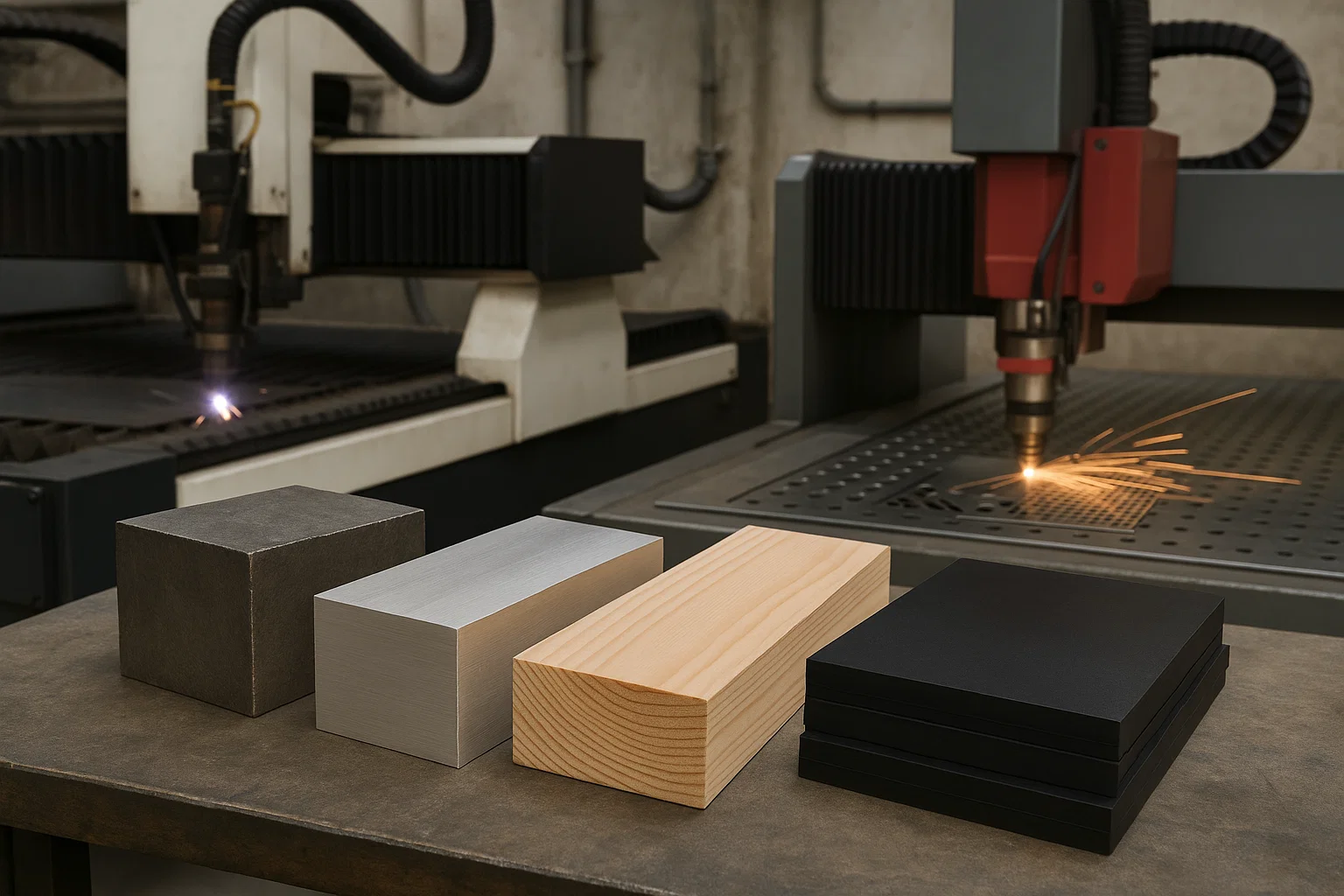
Material Flexibility
Another crucial factor when weighing up the reasons to buy a CNC profiling machine vs. a laser cutting machine is the types of material you plan to cut. Laser cutting is particularly effective for both ferrous and non-ferrous materials, such as aluminium, brass, and copper. Consider the differences:
Laser Cutting
A laser cutter can handle:
- Thin and medium sheet
- Stainless steel
- Mild steel
- Aluminium
- Some plastics
Laser struggles or becomes expensive when processing the following materials:
- Very thick metal
- Copper and brass (unless you have a high-powered fibre laser cutting machine)
- Wood
- Composites
- Foam and Medium Density Fibre Board (MDF)
CNC Profiling
CNC manages the following materials with ease:
- Thick materials
- Structural steel
- Heavy plate
- Wood
- High-density plastics
- Aluminium
- MDF
- Foam
- Composite sheets
Verdict: CNC is more versatile
CNC profiling technology can process a broad range of materials, whereas laser cutting is much more specialised and largely restricted to medium to narrow-gauge metals.

Precision and Use Cases
Laser cutting delivers:
- Very close tolerances
- Minimal kerf
- Clean edges without burrs
Laser cutting works well with:
- Electronics
- Appliance panels
- Decorative steel work
- Enclosures
- Brackets and thin laser-cut parts
After laser cutting, secondary operations such as folding, countersinking, or finishing can produce the final component specifications.
CNC profiling offers:
- Accurate cuts
- 3D cutting options
- Deep cuts and pockets
- Bevels and angled edges
- Sculpted features
CNC profiling is ideal for the following work:
- Structural components
- Furniture
- Components with depth
- Mechanical parts
Verdict: Laser cutting is more precise, CNC is more flexible
Speed and Output
Laser cutting is very fast when used on thin materials. For example, a 1 mm steel part takes between one and three seconds to cut. Setup times are negligible since there are few fixtures to attach. Nesting software packs parts tightly to achieve higher output.
CNC cutting relies on punches and cutting tools, slowing the process down. Where a laser might cut 300 parts per hour, a CNC profiling machine could cut 40–60 pieces, depending on the material.
Verdict: Laser is faster, but only for sheet material
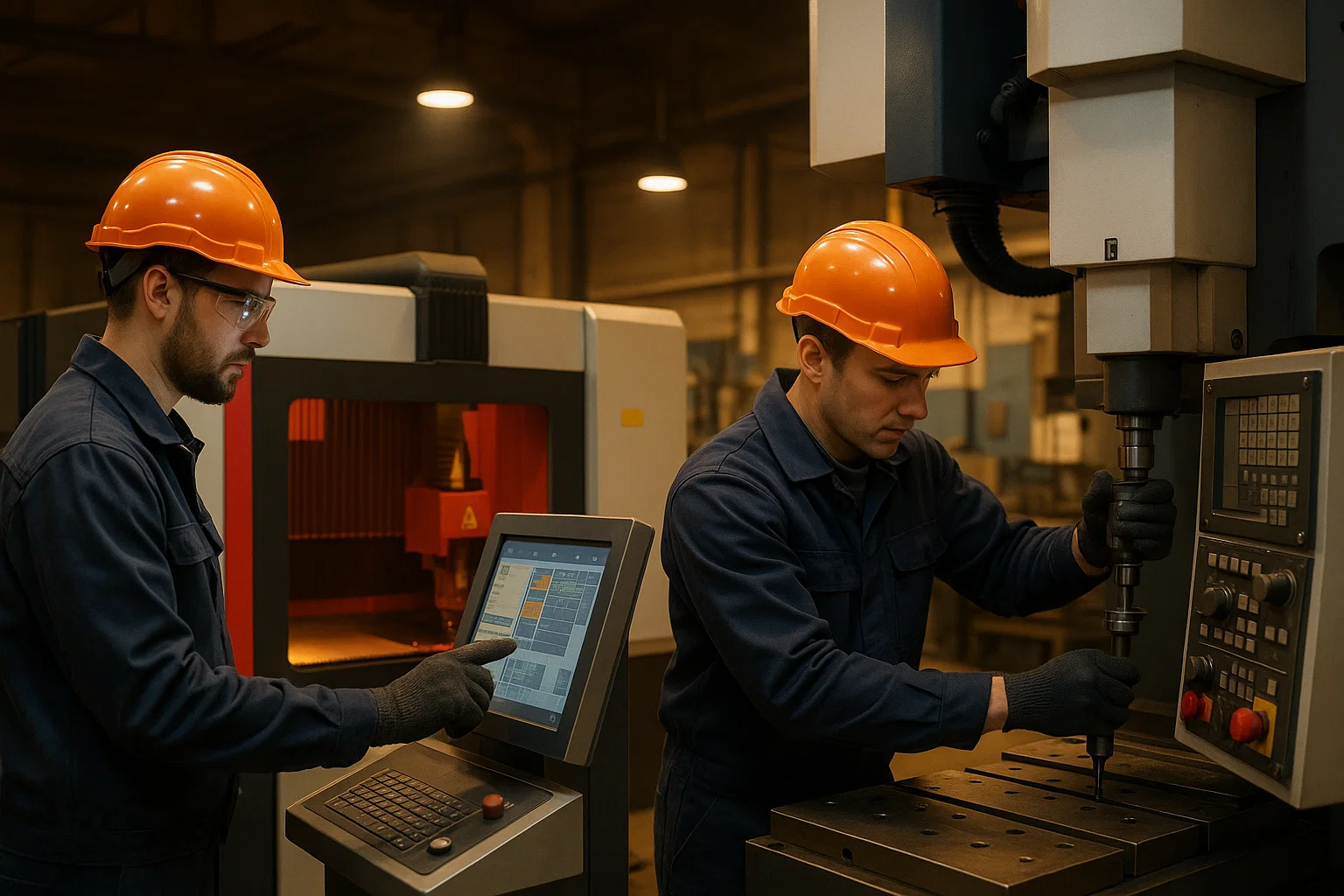
Labour Requirements
Laser cutting machines are:
- Automated
- Easy to load and unload
- Easy to run once the operator is trained
However, operator training is essential and could take a while as operators must understand:
- Optics
- Gas selection
- Material performance
- Laser safety
CNC profiling needs a fair amount of operator attention. Interventions are required for:
- Tool changes
- Higher manual supervision
- Feed rates and speeds
- Material hold-downs to prevent movement during machine operation
Verdict: Laser is more highly automated, while CNC profiling needs more operator time
Hidden Costs
It is important to understand the extra costs you may encounter along the way and make allowances for these in your budget.
Laser Cutting Hidden Costs
The hidden costs of laser cutting can be considerable. Expect the following:
- Gas pricing fluctuations
- Optics replacements
- Cooling system maintenance
- Mandatory eye-safety enclosures
- Fire risk precautions
- Dust extraction for metal fumes
CNC Profiling Hidden Costs
CNC profiling costs are perhaps a little more predictable. Expect to pay for:
- Tooling inventory
- Tool wear
- Dust extraction for wood
- Occasional spindle replacements
Verdict: CNC is simpler, cheaper, and more predictable
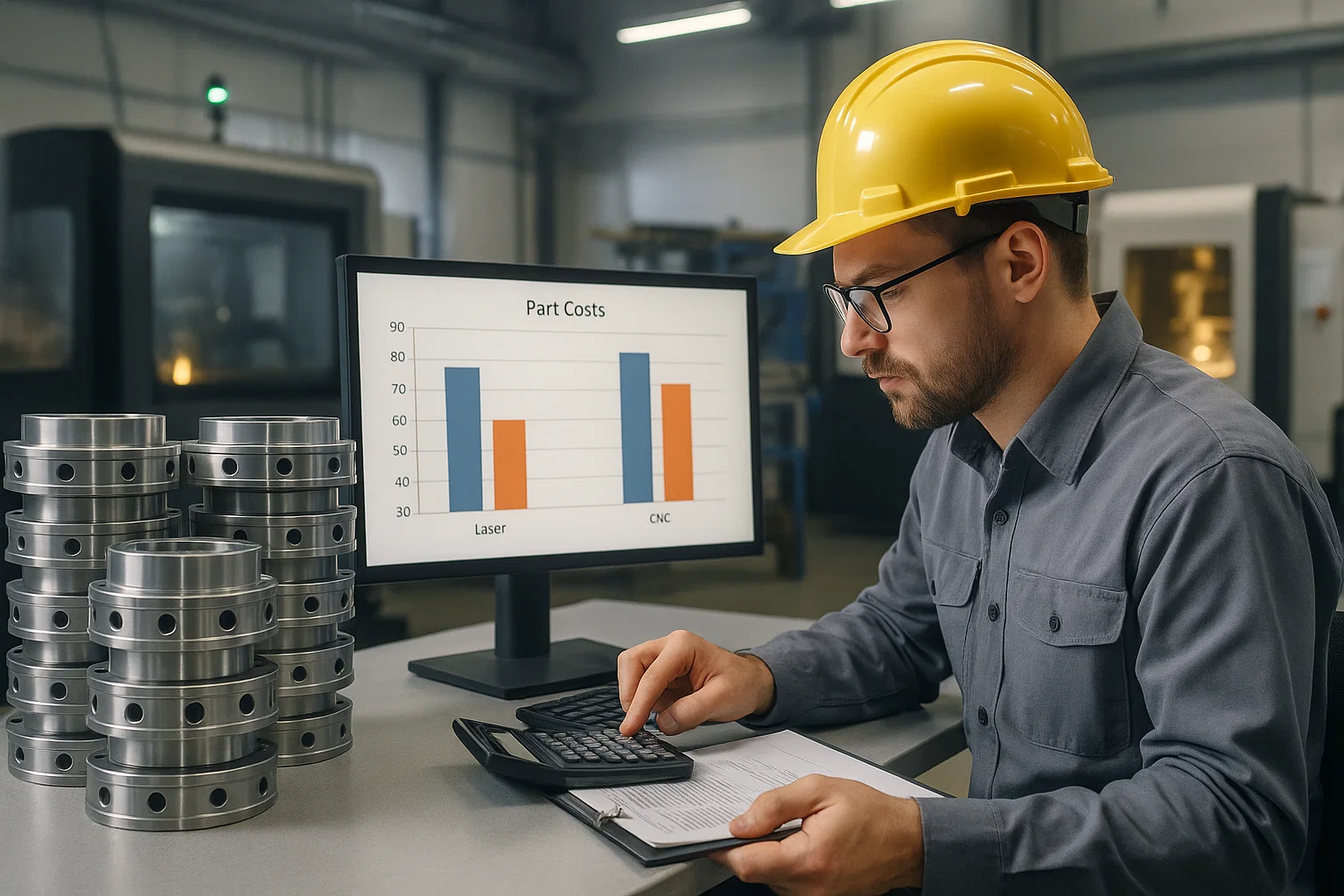
Analysing the Cost-Per-Part
Here’s a simple comparison:
Laser Example
If a laser runs at £100/hr and produces 200 sheet metal parts:
Cost per part = £0.50
CNC Example
If a CNC runs at £60/hr and produces 50 similar parts:
Cost per part = £1.20
Laser wins for high-volume sheet-metal production.
However, the picture changes with thicker materials as the laser slows down. It’s only possible to cut these on advanced, high-powered, and costly machines — and even then, not all materials can be handled.
CNC wins for heavy materials, low-volume runs, or high-mix production.
Factors to Weigh in Considering CNC Profiling vs Laser Cutting
CNC profiling works well when:
- You cut many different kinds of materials
- You work with thick plates or structural parts
- You cannot justify the laser’s high investment
- You need 3D machining or complex profiles
- You want an adaptable machine that can do a broad range of jobs
- You require additional fabrication processes (e.g. press brakes) for greater flexibility
Laser excels when:
- You cut thin sheet metal
- You favour the fastest possible production run rate
- High-quality edges are vital
- You need high-volume output
- Your business relies on tight tolerances
- You favour a highly automated process

Laser Cutting vs CNC Profiling: The Bottom Line
The true value of CNC profiling lies in its flexibility, lower operating cost, and lower initial investment.
A laser cutting service may be faster in some applications, but CNC profiling pips laser cutting to the post in the following respects:
- It handles more materials
- Cuts thicker stock
- Uses cheaper consumables
- Costs less to maintain
- Works well for low-volume or custom orders
- Can do 3D shaping, drilling, pocketing, routing, and bevels
- Accommodates smaller budgets
- Delivers predictable operating costs
- Is safer and simpler to operate
The Total Cost of Ownership is significantly lower for CNC profiling.
A Hybrid Strategy: Blending CNC Machining and Laser Cutting
Many modern fabrication shops now use lasers for sheet metal jobs and CNC profiling for more specialised work. The blend of technologies used in hybrid strategies increases the scope of projects you can take on and should boost profitability.
